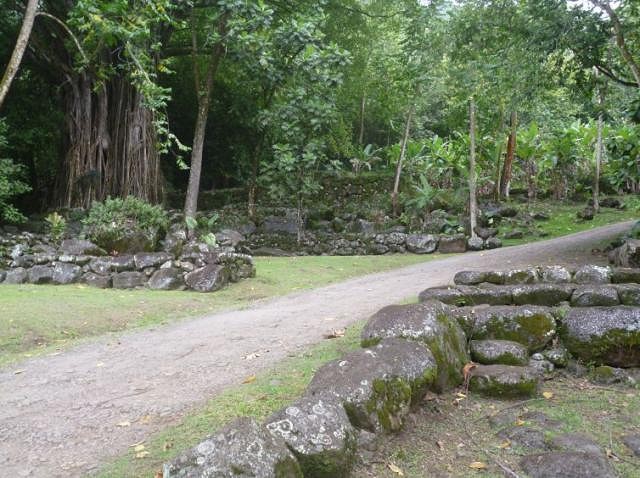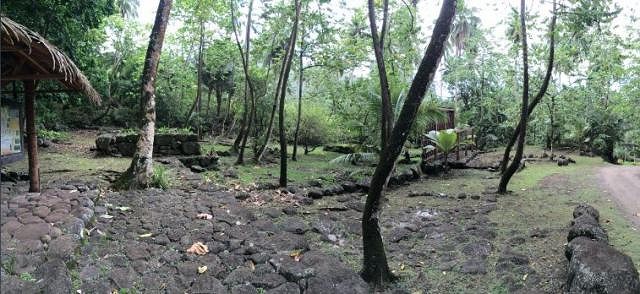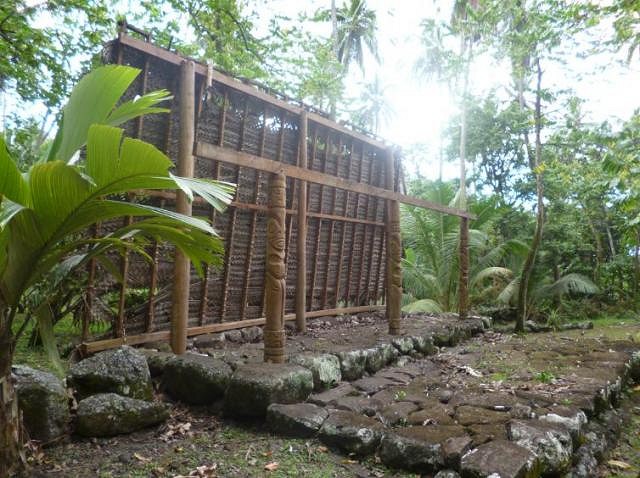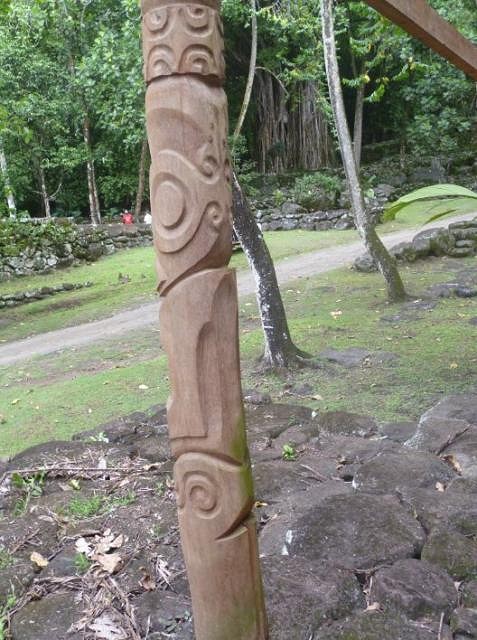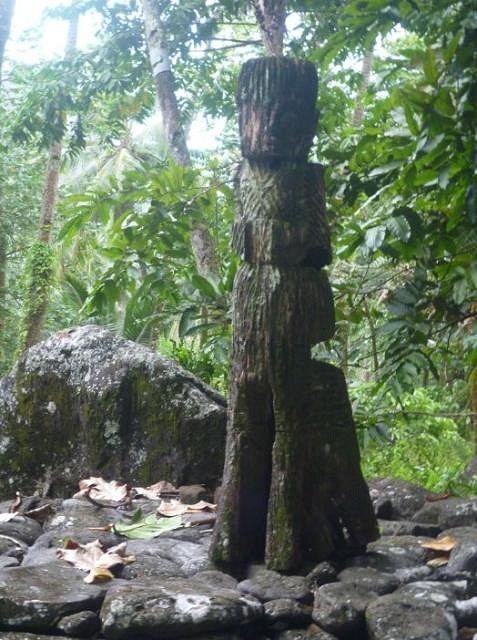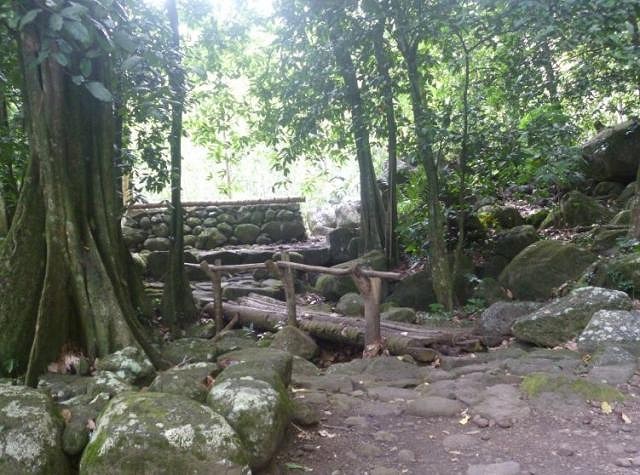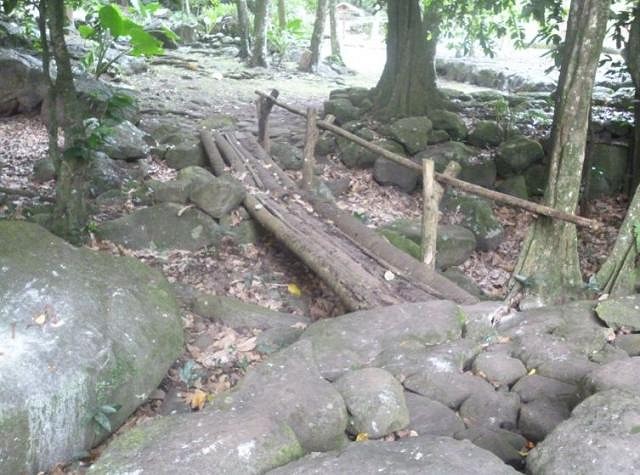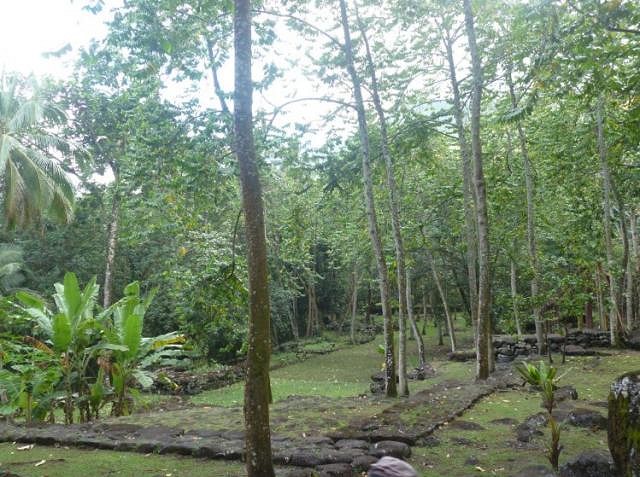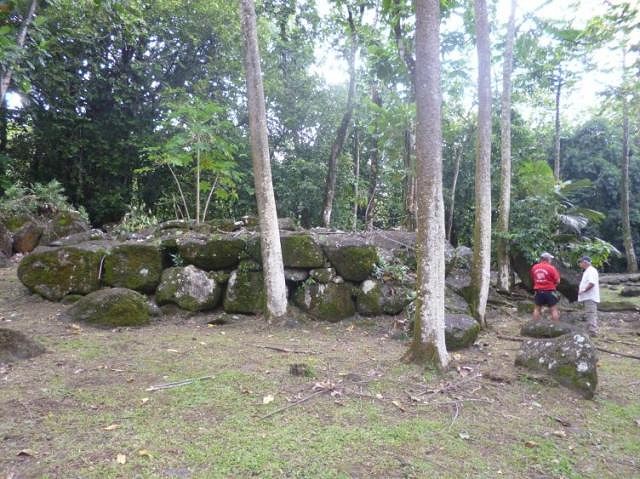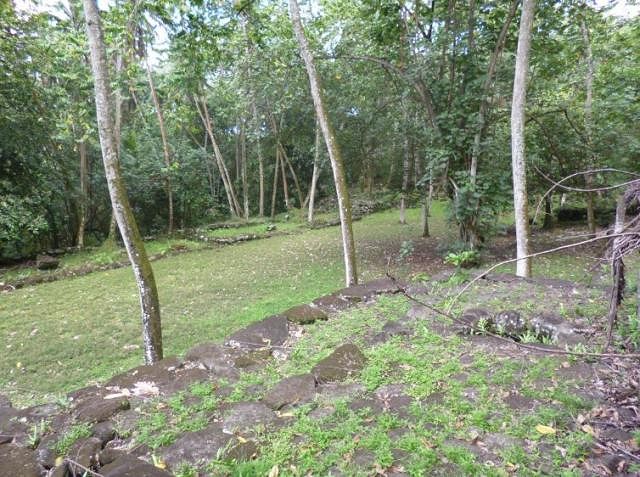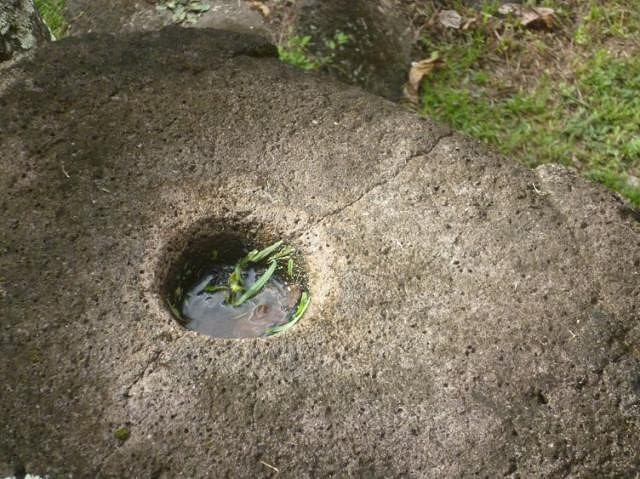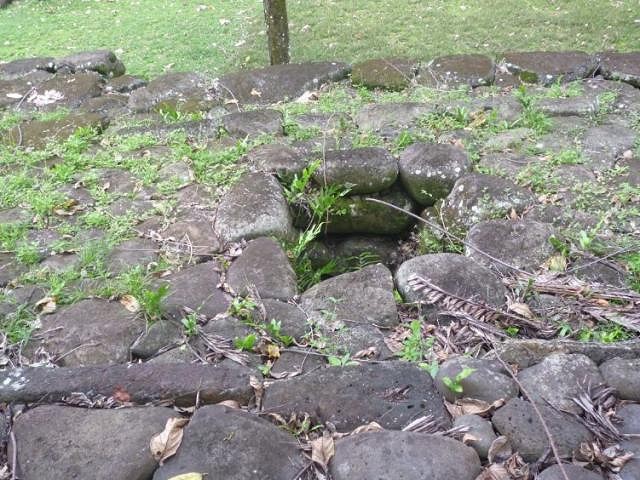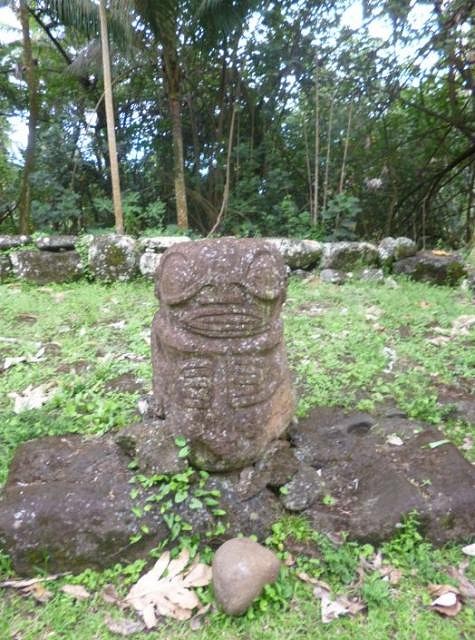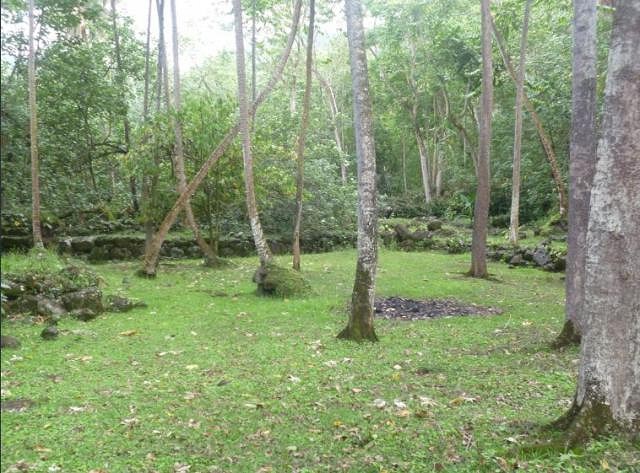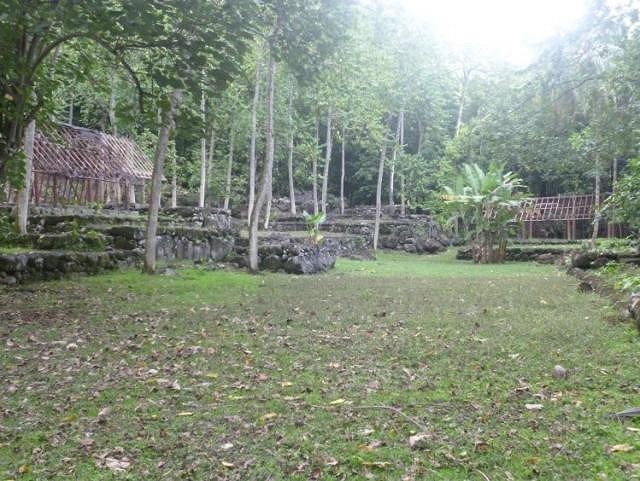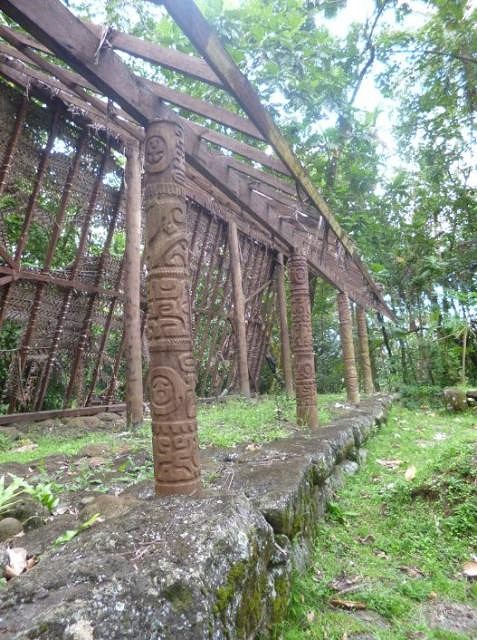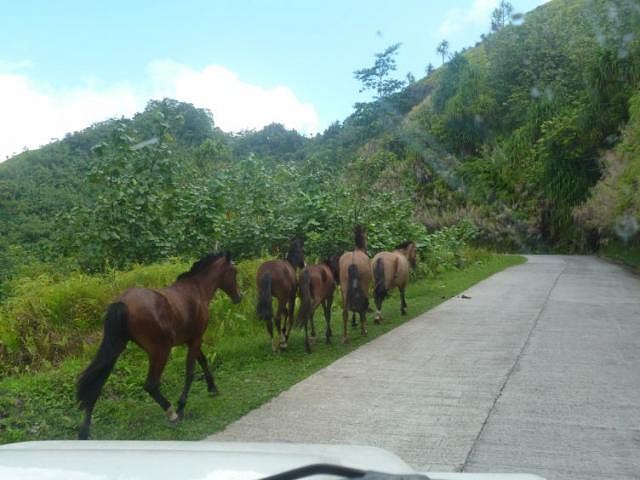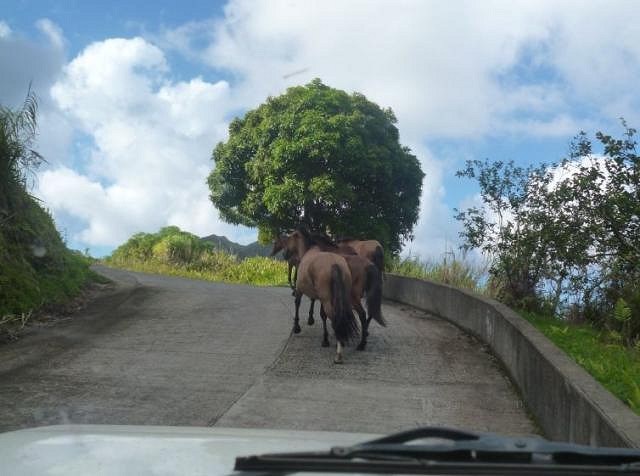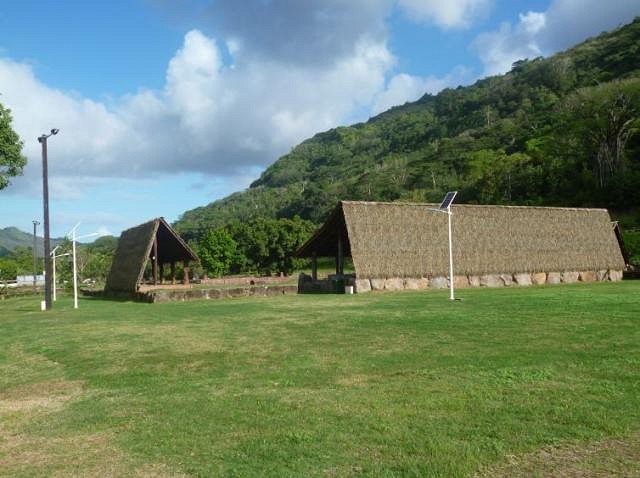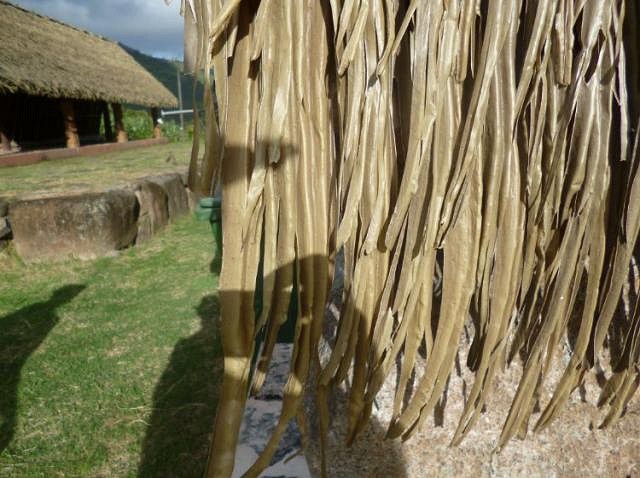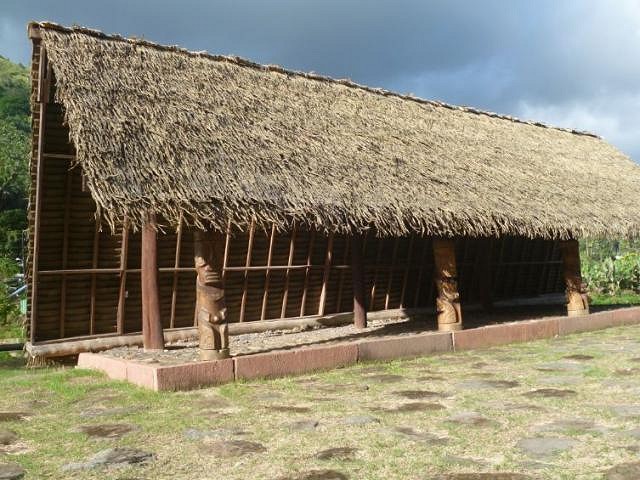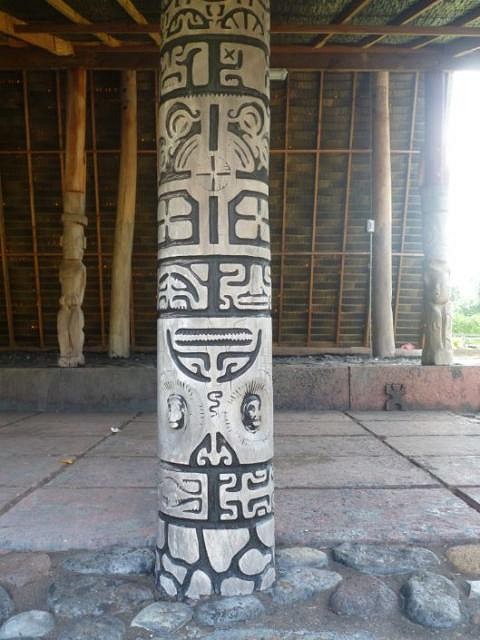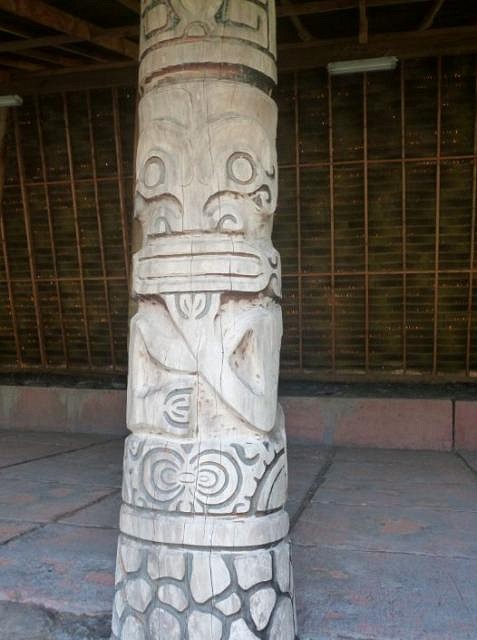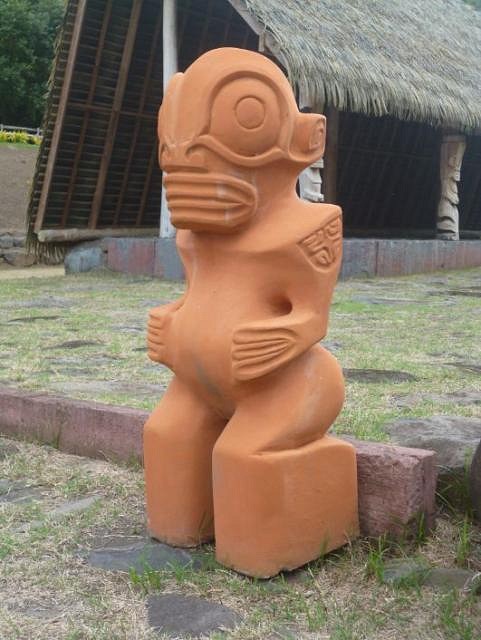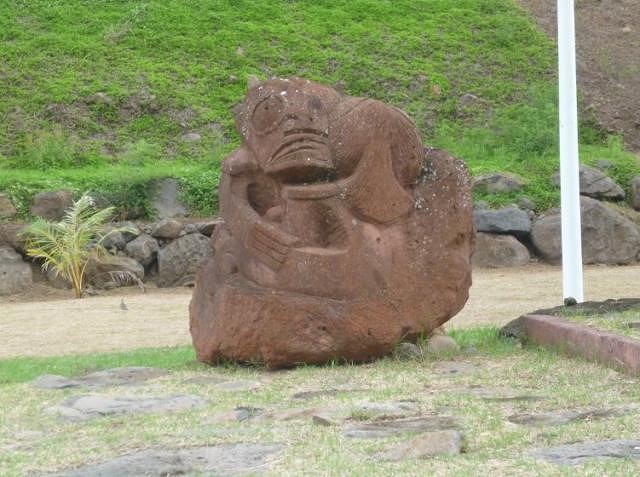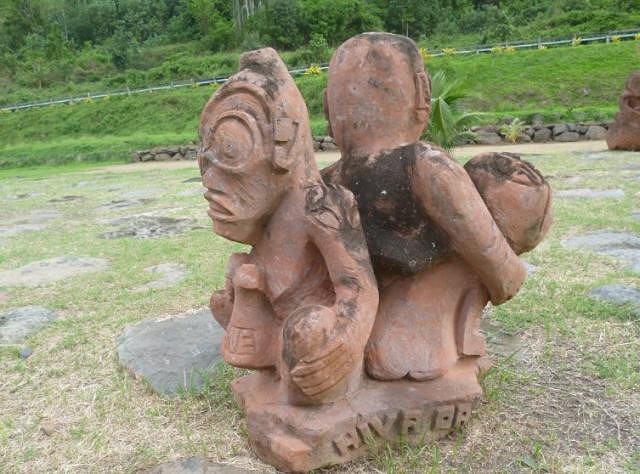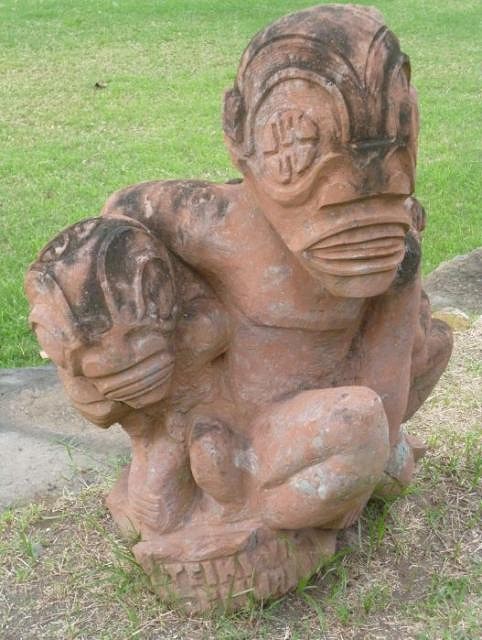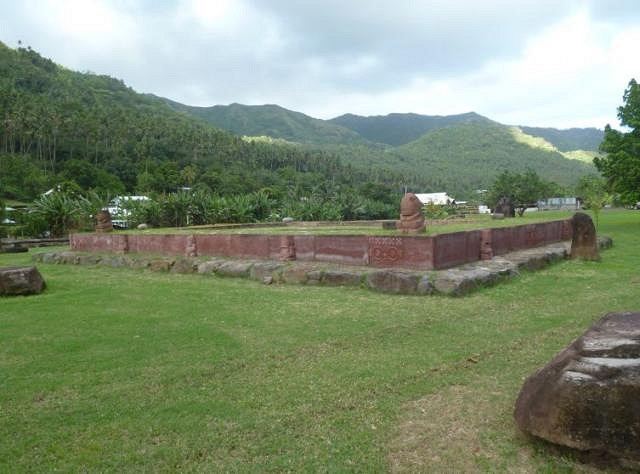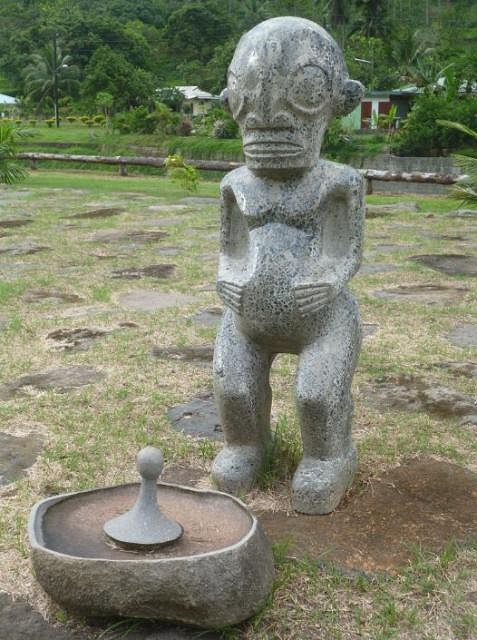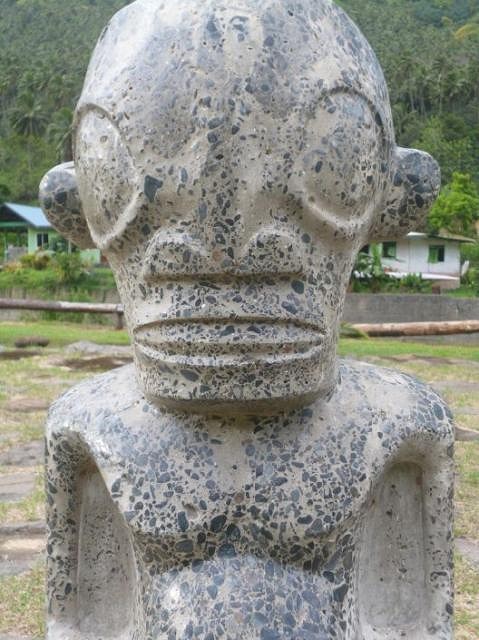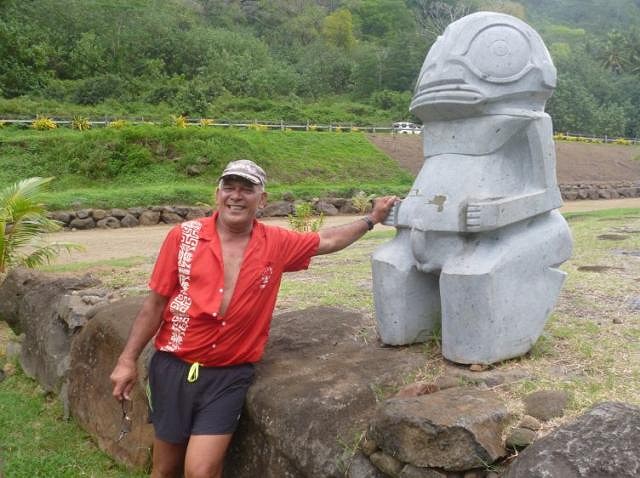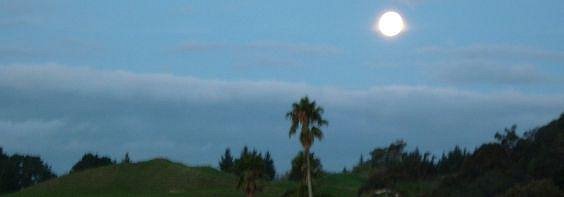Tiki Central / Tiki Travel / Club Nouméa's Tahitian Tiki Tour (fortified with added Marquesas)
Post #741727 by Club Nouméa on Fri, Apr 24, 2015 8:02 AM
|
CN
Club Nouméa
Posted
posted
on
Fri, Apr 24, 2015 8:02 AM
Nuku Hiva: Past and Present
We arrived at the site of Kamuihei, Tahakia and Te'i'ipoka just as some stud farmers from Taipivai were rounding up their grazing horses to herd them back up the Hatiheu valley road and over the hill to Taipivai. They give a good idea of the massive scale of the stone construction at the site, all done using just levers, ropes, and a lot of sweat. The three adjoining sites had a total population of around 3,000 in pre-European times, and the oldest structures there date back 600 years.
Kamuihei and Te'i'ipoka are on this side of the road in the photo above, taken looking southwards, while on the other side of the road lies Tahakia. It was difficult to take a single photo giving an idea of the lay of the land, as the site is so large.
The photo above, taken facing northwards, shows some of the Kamuihei site, while Te'i'ipoka is beyond. I wandered back down the road towards Hatiheu to have a look at a reconstructed paepae:
On the Tahakia side of the road, this rustic-looking tiki stands guard:
Further on, a log bridge leads to the Tahakia site:
The settlement used to have its own water supply in the form of this stream, now long dried up:
Tahakia takes the form of a long rectangular arena, overlooked by higher platforms:
The platforms feature some very large rocks, some of which must weigh a tonne or two:
As Yvon led us into this area, he broke out into oratory in Marquesan, greeting the ancestors loudly, saluting them and requesting permission to enter this sacred location. It is standard protocol still practised by visitors to contemporary maraes as far away as New Zealand. He explained in French that the platform we were standing on was reserved for the chief and his immediate circle of family, elders and advisors, and back in the day we would definitely not have been allowed up there. From this vantage point, he used to sit and look down on the tribe at various gatherings:
At the back of the platform was another reconstructed (although unthatched) paepae:
The modern posts were inserted into postholes that had been hand-carved centuries ago:
The platform also had its own firepit:
Here's how the chief's platform (in the centre) looks from the cheap seats:
Watching from the cheap seats was this little tiki, who is probably a modern addition to the site:
Work on clearing the site and rescuing it from the jungle only began in 1998, and standing in the middle of it all, you are aware that there is more out there remaining to be uncovered:
The view looking back from the jungle end of the arena:
This is the paepae on the right in the photo above:
On the drive back over the hill to Taipivai, we caught up with some stragglers from the group of grazing horses:
Yvon decided to herd them back over the hill and down to Taipivai with his Landrover, honking the car horn and shouting in Marquesan at them. As he explained, it would be getting dark in another hour or two and it was too dangerous to leave them to their own devices; a passing vehicle might run into them in the dark. At one point on the downward slope, I got to roll down the passenger window and shout "bouge-toi!" (shift yourself!) at a horse that had decided to jump over the roadside concrete barrier in order to escape from the pursuing Landrover. Much to my amazement he meekly hopped back over the wall and got back on the road.
Having herded the horses down to lower land, Yvon then drove us off to Taipivai's almost brand-new marae (built in 2011 if my memory serves me well). There was some initial debate about what to do as the main gate was locked, but I settled the matter by climbing over a fence.
Note the solar panels, which provide power for the site's lighting. Reaching the first paepae, I stopped to ask Yvon about this plastic thatch that I had already spotted on the other side of the island:
He said there had been a long debate about it, and some protests from various elders, but the village had decided that plastic thatch was the way to go: it is more cost-effective, as it does not have to be replaced every three to four years like natural thatch does, which also saves a lot of time, as it takes hours and hours of community effort to redo all the roofing for the marae. And it certainly looks the part:
I also asked him about the wood-burnt finish of various of the posts, which is something I had not seen in these parts before:
It turned out that at the end of 2013, a local pyromaniac had tried to burn down the marae. The community had rallied around and rebuilt it within a few months, but the legacy of that was that various of the carvings were still smoke-stained. I was about to explain about how Californians actually do that to their tikis on purpose but thought perhaps the irony might not be appreciated by this fireman, who was clearly still pained at all the damage that had been caused. The effect was not necessarily bad, and certainly made the tiki posts that had been burnt easier to photograph:
This one seems to be saying "what the #$#?" Soon I was doing the same, upon spotting this terracotta guy, who was a gift from another island in the Marquesas:
"Mais ce petit bonhomme est orange!" (But this little guy's orange!) Yvon thought my response was hilarious: "That's what various elders said when they unpacked him - but he's a nice-looking tiki, non?" There were some resolutely modern and very striking tiki carvings on the Taipivae marae. This one looked like something Edvard Munch would have done:
A primitive pop art effort gifted by the island of Hiva Oa:
It was still showing scorch-marks from the arson attempt:
I also asked about the configuration of the marae, wondering if there was any special significance in the layout:
And was told that it was designed merely to be practical: covered stands on three sides for the audience, while the stones at various points are merely there for performers to sit on while they are waiting to get up to perform. Down the far end, there is an open-air platform:
The walls of which are made from concrete:
Some of the tikis were also concrete castings:
Polished concrete with inlaid pebbles in the case of this tiki:
At this point, reminding me about a disapproving comment I had made earlier that afternoon about missionaries chopping dicks off tikis, my guide gleefully called me over to take a special photo of him:
It was a great conclusion to a wonderful day out and about on Nuku Hiva and I hope I can return to the Marquesas in the not-too-distant future.
[ Edited by: Club Nouméa 2015-04-24 08:32 ] |


